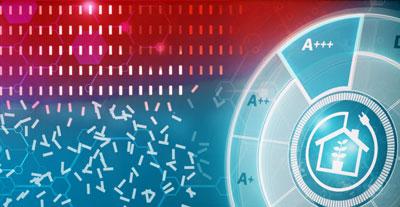 Heat pumps today work almost exclusively on the basis of compressor technology. compressorsen require harmful refrigerants. Against this background develop six Fraunhofer institutes In the Fraunhofer lead project “Elkawe”, highly efficient electrocaloric heat pumps that do not use harmful refrigerants.
Heat pumps today work almost exclusively on the basis of compressor technology. compressorsen require harmful refrigerants. Against this background develop six Fraunhofer institutes In the Fraunhofer lead project “Elkawe”, highly efficient electrocaloric heat pumps that do not use harmful refrigerants.
Solid-state heat pumps to which electrocaloric systems count, work with harmless fluids such as water. Caloric systems are also noiseless, which is important, for example, for the air conditioning of electric vehicles. Previous knowledge also gives reason to assume that electrocaloric heat pumps will also be superior to compressor technology in terms of efficiency. "We see the opportunity to completely replace compressor-based heat pumps in the long term," says Prof. Karsten Buse, head of the institute at Fraunhofer IPM, who heads the project. "According to the knowledge that we have gained in the field so far, electrocalorics can have disruptive potential for heating and cooling technology."
Electro-calorific heat pumps promise a significantly higher efficiency, which is the spread of heat pumps for the Air conditioning will carry. In refrigeration technology, the research team mainly focused on industrial refrigeration technology, vehicle air conditioning, server and switch cabinetcooling and laboratory refrigerators in view. In principle, the technology is also suitable for household cooling technology.
Heat pump made of ceramic electrocaloric materials
The scientists will be on Material and system structure work to demonstrate the disruptive potential of technology. Fraunhofer IKTS has extensive experience with ceramic electrocaloric materials and coatings. Fraunhofer IAP and LBF contribute know-how for the development of polymer materials, which will be further developed for use in electrocaloric heat pumps. Fraunhofer FEP develops special coatings for the insulation and functionalization of the components.
The Fraunhofer LBF will examine not only the functional polymers but also the service life and reliability of materials and systems. Fraunhofer IAF will develop the electrical control for the heat pumps. Material and components must be stable over the long term, sufficiently available, inexpensive and, last but not least, harmless. All of these competencies are brought together to implement a completely new system approach, patented by Fraunhofer IPM: This provides for the heat transfer to be achieved by a combination of evaporation and condensation of a harmless fluid in so-called heat pipes with a thermal diode.
The Heat dissipation Hitherto proved to be a bottleneck with regard to the efficiency of electrocaloric systems: the faster it is done, the more powerful the pump is. Preliminary studies show that this can be done much faster with the new concept. The systems work without active pumping and thus achieve a cycle frequency many times higher than previous systems. The team's goal is to have a demonstrator with an output of 100 W and a temperature rise of 30 K in four years.